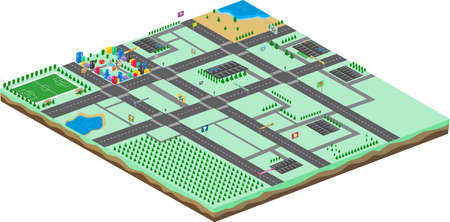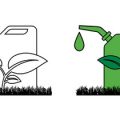Introduction to Greenhouse Regulations in the UK
Greenhouses have become increasingly popular across the United Kingdom, serving both domestic gardeners and commercial growers. However, as with many structures, their installation and use are subject to specific regulations and planning permissions. These rules are designed to ensure that greenhouse developments align with broader planning objectives, preserve local character, and prevent any potential nuisances or safety hazards. Understanding the necessity for these regulations is crucial, as they help balance individual interests with those of the wider community. The legal landscape affecting greenhouses in the UK encompasses national legislation, local authority guidelines, and a framework intended to manage land use efficiently while supporting sustainable development. This overview aims to provide clarity on why such controls exist and how they shape the construction and placement of greenhouses throughout the country.
Permitted Development Rights for Domestic Greenhouses
In the United Kingdom, many homeowners benefit from permitted development rights, which allow certain types of structures, including greenhouses, to be built without formal planning permission. These rights are particularly relevant in domestic or residential settings, where garden structures are common. However, specific conditions and limitations must be met to ensure that a greenhouse qualifies as permitted development. Understanding these rules is essential before commencing any construction.
Key Conditions for Permitted Development
To build a greenhouse under permitted development rights, the following general criteria typically apply:
| Condition | Description |
|---|---|
| Location | The greenhouse must not be built forward of the principal elevation facing a highway. |
| Height | The maximum height must not exceed 4 metres for a dual-pitched roof or 3 metres for other types; if within 2 metres of a boundary, the maximum height is 2.5 metres. |
| Area Coverage | No more than 50% of the original land around the house may be covered by outbuildings and extensions. |
| Designated Land Restrictions | On designated land (such as national parks or conservation areas), additional restrictions apply and side-facing greenhouses may require planning permission. |
| Listed Buildings | No permitted development rights apply within the curtilage of listed buildings. |
Additional Considerations for Domestic Greenhouses
Certain factors may also affect whether your greenhouse project needs planning permission:
- Use: The greenhouse must be used for purposes incidental to the enjoyment of the dwellinghouse (e.g., growing plants).
- Bases and Foundations: Substantial foundations or raised platforms over 0.3 metres high may require additional permissions.
- Neighbouring Properties: If your property is in close proximity to neighbours, it is good practice to consult them to avoid disputes.
- Covenants: Title deeds or covenants may impose additional restrictions beyond planning regulations.
Summary Table: When Is Planning Permission Required?
| Scenario | Planning Permission Needed? |
|---|---|
| Standard residential garden, meets all criteria above | No |
| Greenhouse exceeds height/area limits or is on designated land | Yes |
| Within curtilage of a listed building | Yes |
| Commercial use or non-domestic setting | Yes |
If you are uncertain about any aspect of your proposed greenhouse, it is advisable to check with your local planning authority before proceeding, as rules can vary slightly between councils across the UK.

3. Planning Permission Requirements
Understanding whether your greenhouse project requires planning permission is crucial in the United Kingdom, as regulations are set to ensure that new structures harmonise with their surroundings and do not negatively impact local communities or the environment. The circumstances that necessitate planning permission for greenhouses are governed by several key factors.
Location of the Greenhouse
The location of a proposed greenhouse plays a significant role in determining if planning consent is needed. For example, greenhouses erected within the curtilage of a listed building or situated in designated areas such as Conservation Areas, National Parks, Areas of Outstanding Natural Beauty (AONB), or Sites of Special Scientific Interest (SSSI) typically face stricter controls. In such sensitive locations, even minor alterations may require formal approval from the local planning authority.
Size and Scale Considerations
The dimensions of your greenhouse are another critical factor. Under permitted development rights, domestic greenhouses generally do not need planning permission if they meet specific size restrictions: they must not exceed 4 metres in height (or 2.5 metres if within 2 metres of a boundary), and their total ground coverage, when combined with other outbuildings, should not occupy more than half the area of land around the original house. Exceeding these thresholds will likely trigger the need for a formal application.
Potential Environmental Impact
If your greenhouse has potential to affect the surrounding environment—such as altering drainage patterns, introducing significant light pollution, or impacting protected species—your project may be subject to additional scrutiny. Proposals that could compromise biodiversity or disrupt local ecosystems often require supporting environmental assessments and may face conditions or constraints as part of the approval process.
Impact on Neighbours and Amenity
Local councils also evaluate how a new greenhouse might affect neighbouring properties, particularly regarding loss of privacy, overshadowing, or obstruction of light. Complaints from neighbours can influence the outcome of an application, so it is advisable to consider proximity to boundaries and sightlines before construction begins.
Summary
In summary, while many domestic greenhouses are allowed without express planning permission due to permitted development rights, exceptions apply based on location, size, and potential impacts on neighbours or the environment. Consulting with your local planning authority early in your project ensures compliance and minimises delays.
4. Building Regulations and Compliance
When constructing a greenhouse in the United Kingdom, it is essential to consider not only planning permission but also compliance with relevant building regulations. Although small greenhouses often fall outside the scope of full building regulations, certain requirements may still apply, particularly for larger structures or those intended for commercial use.
Overview of Applicable Building Regulations
The main purpose of building regulations is to ensure that any structure is safe, energy-efficient, and environmentally responsible. The following table summarises key areas of regulation that may impact greenhouse construction:
| Regulation Area | Description | Typical Applicability to Greenhouses |
|---|---|---|
| Structural Integrity | Ensures the building can withstand weather conditions such as wind and snow loads. | Required for large or bespoke greenhouses; most small domestic greenhouses are exempt. |
| Fire Safety | Covers escape routes, fire resistance of materials, and proximity to boundaries. | Mainly relevant if greenhouse is attached to a dwelling or used commercially. |
| Accessibility | Requires provisions for disabled access in public/commercial buildings. | Rarely applicable for private domestic use, but necessary for commercial operations open to the public. |
| Environmental Impact | Addresses waste management, water drainage, and energy efficiency. | Important for large-scale or heated greenhouses; minimal impact on small garden models. |
Structural and Safety Considerations
Regardless of exemption status, it is advisable to ensure your greenhouse is structurally sound and safely constructed. This includes using appropriate foundations, secure glazing, and ensuring adequate ventilation. For commercial greenhouses or those exceeding 30 square metres in floor area, formal approval under the Building Regulations 2010 may be required.
Environmental Responsibility
The UK places increasing emphasis on sustainable construction. Rainwater harvesting, efficient heating systems, and eco-friendly materials are recommended practices. In some cases, local authorities may set additional standards relating to energy use or drainage to mitigate environmental impact.
Key Takeaway
Before starting construction, always consult your local authority’s Building Control department. While many domestic greenhouses are exempt from full building regulations, larger or specialised projects must adhere to strict standards to ensure safety and sustainability within UK legal frameworks.
5. Special Considerations for Listed Buildings and Conservation Areas
When planning to erect a greenhouse in the United Kingdom, particular attention must be paid if the proposed site is within the curtilage of a listed building or located in a conservation area. These designations signify that the property or locale is of special architectural or historic interest, and as such, additional layers of regulation apply beyond standard planning controls.
Understanding Listed Building Status
Listed buildings are protected under the Planning (Listed Buildings and Conservation Areas) Act 1990. Any alteration, extension, or new structure—including greenhouses—within the grounds of a listed property generally requires Listed Building Consent in addition to standard planning permission. This applies even if the greenhouse itself is not physically attached to the main building. Authorities will assess whether the greenhouse could impact the character, appearance, or setting of the listed structure.
Key Restrictions and Best Practices
Applications for greenhouses near listed buildings should carefully consider materials, design, and placement to ensure compatibility with the existing historic fabric. Glasshouses constructed from traditional materials and sympathetic designs are more likely to gain approval. Inappropriate modern materials or positioning that obscures important views may lead to refusal.
Conservation Areas: Preserving Local Character
Conservation areas are designated to safeguard distinctive local heritage. Erecting a greenhouse within these zones can face stricter scrutiny regarding size, visibility from public spaces, and overall visual impact on streetscapes. Some permitted development rights may be withdrawn by Article 4 Directions, requiring formal planning applications for works that would otherwise not need consent.
Consultation and Community Engagement
Engaging early with your local planning authority (LPA) is highly recommended when considering greenhouse projects in sensitive locations. LPAs can provide guidance on policy requirements and suggest adjustments to improve your application’s prospects. Consulting conservation officers or heritage advisers can also help address potential concerns proactively and demonstrate respect for local values.
In summary, installing a greenhouse in or around listed buildings or conservation areas involves navigating additional permissions and demonstrating that proposals will not harm historic or architectural significance. Early consultation and careful design play crucial roles in achieving successful outcomes in these protected contexts.
6. Practical Tips for a Successful Application
Securing planning permission or ensuring compliance with greenhouse regulations in the United Kingdom requires careful preparation and an understanding of local requirements. Adopting best practices can significantly improve your chances of approval and help avoid costly delays or enforcement actions. Below are essential tips to guide you through the process.
Engage Early with Your Local Authority
Before submitting an application, it is advisable to initiate early discussions with your local planning authority. These pre-application consultations can provide valuable insights into specific local policies, potential concerns, and preferred design features. Engaging early also demonstrates your willingness to cooperate and adapt your plans where necessary.
Prepare Comprehensive Documentation
Successful applications are supported by clear, thorough documentation. This typically includes detailed site plans, scaled drawings, and a design and access statement outlining how your proposal meets relevant planning criteria. It is important to address issues such as visual impact, proximity to boundaries, and any effect on neighbouring properties or listed buildings. Supporting evidence, such as environmental assessments or flood risk reports, should be included if applicable.
Understand Local and National Regulations
Familiarise yourself with both national guidance—such as the Town and Country Planning Act 1990—and any supplementary policies from your local council. Some areas may have Article 4 Directions or conservation area controls that impose stricter requirements for structures like greenhouses. Ensuring compliance from the outset reduces the risk of retrospective enforcement action.
Maintain Clear Communication
Throughout the application process, maintain open communication with planning officers and neighbours. Addressing concerns promptly can mitigate objections and foster community support for your project. Transparency in your intentions often leads to a smoother decision-making process.
Monitor Progress and Respond Promptly
Once submitted, regularly check the status of your application on the local authority’s planning portal. Be prepared to supply additional information or clarify details at short notice. Timely responses help prevent unnecessary delays and demonstrate your commitment to meeting regulatory standards.
Seek Professional Advice When Needed
If you are unsure about any aspect of the process, consider consulting a qualified planning consultant or architect with experience in greenhouse developments. Their expertise can help you navigate complex regulations and present a robust case for approval.
By following these practical steps—engaging proactively with authorities, preparing thorough documentation, understanding relevant regulations, communicating transparently, monitoring progress closely, and seeking expert advice—you will maximise your chances of a smooth approval process and ensure your greenhouse project fully complies with UK planning laws.


